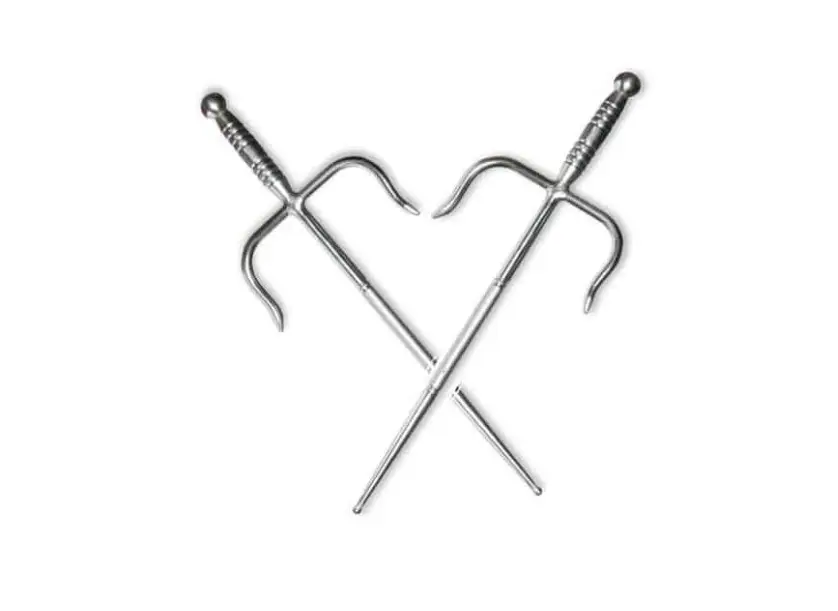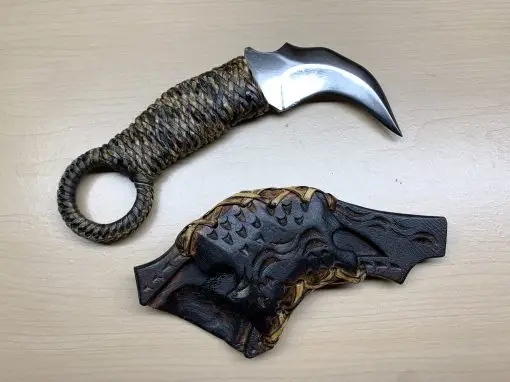The Tekpi in Silat: A Unique Weapon
Silat is a traditional martial art that originated in Southeast Asia, particularly in countries like Indonesia, Malaysia, and Brunei. One of the unique weapons used in Silat is the Tekpi. This weapon is often compared to the Sai used in Karate, but there are some distinct differences between the two.
What is the Tekpi?
The Tekpi is a traditional weapon that consists of a metal rod with a curved prong at one end. It is typically made from steel or iron and is designed for both offensive and defensive purposes. The pronged end can be used to trap and disarm an opponent’s weapon, while the rod itself can be used for striking or blocking.
In Silat, the Tekpi is considered an extension of the hand. Practitioners learn to use it in conjunction with various hand strikes, kicks, and grappling techniques. The weapon becomes an integral part of their overall fighting style.
Comparison to the Karate Sai
While the Tekpi and the Karate Sai share some similarities in terms of their appearance, there are several key differences in their usage and techniques.
1. Grip
In Karate, the Sai is typically held with a grip that allows for a strong and stable hold. The practitioner’s fingers wrap around the handle, providing control and power. In Silat, however, the Tekpi Sai is held with a looser grip. This allows for greater flexibility and agility in manipulating the weapon during fast-paced combat situations.
2. Techniques
The techniques used with the Tekpi in Silat are unique to the art. Silat emphasizes fluid and continuous movements, with a focus on close-quarters combat. The Tekpi is used in conjunction with various strikes, blocks, and traps, making it a versatile weapon in the hands of a skilled Silat practitioner.
On the other hand, the Karate Sai techniques focus more on linear strikes and blocks. The Sai is used as an extension of the hand, allowing for powerful strikes and precise blocking techniques. Karate practitioners often train in kata, or prearranged forms, to develop their skills with the weapon.
3. Combat Applications
The combat applications of the Tekpi in Silat are diverse and adaptable. Silat practitioners learn to use the weapon in a variety of situations, including both armed and unarmed encounters. The Tekpi can be used to disarm an opponent, control their movements, or deliver powerful strikes to vulnerable areas.
In Karate, the Sai is primarily used as a defensive weapon. It can be used to block and parry an opponent’s strikes, as well as to trap and control their weapon. Karate practitioners focus on precision and timing, using the Sai to create openings for counterattacks.
The Importance of Training
Whether you choose to study Silat or Karate, it is important to receive proper training in the usage of the Tekpi or Karate Sai. These weapons require skill, precision, and understanding to be used effectively in combat situations.
Training in Silat or Karate will not only teach you how to use the Tekpi or Karate Sai, but also provide you with a deeper understanding of the martial art as a whole. You will learn important principles such as discipline, respect, and self-defense techniques that can be applied in various aspects of your life.
In Conclusion
The Tekpi in Silat is a unique weapon that has its own set of techniques and applications. While it may share some similarities with the Karate Sai, the differences in grip, techniques, and combat applications make them distinct from each other. Whichever martial art you choose to pursue, training in the usage of these weapons will enhance your skills and deepen your understanding of the art.


